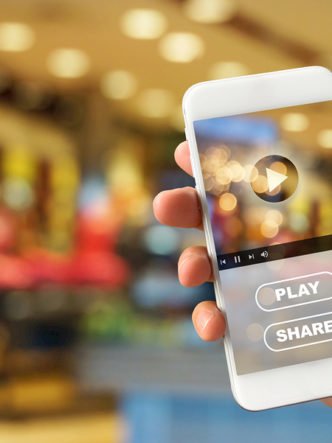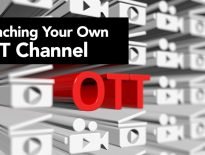
The streaming market is more competitive than ever. Find out which service has the best content and compatibility for your home.
There has been a huge increase in the number of streaming TV subscriptions over the past year.
Viewership soared during pandemic lockdowns. Several companies have entered into the highly competitive market with new streaming devices and services.
There are now multiple high-profile streaming options available to users. They vary widely in their technology, their user interface, and included features.
We’ve gathered three of the most popular upcoming over-the-top (OTT) media streaming services and compared them to find the one that represents the best value for your money.
Comparison: Apple TV vs Roku vs Amazon Fire Stick
Each of these three options has a different hardware layout and offers different content to users. We’re going to look at how each company handles five major elements of streaming success:
- Ease of Setup. Plug-and-play functionality is a definite plus in the streaming TV market, where a complicated setup process can give you second thoughts about your purchase.
- User Interface. TVs are not like tablets or phones. Bad navigation and remote design can make getting the most out of your streaming service incredibly difficult.
- Compatibility. Speaking of tablets and phones, it’s nice to be able to view streamed TV content on multiple devices. It’s even better when content retains its quality across multiple devices.
- Extra Features. Most streaming platforms offer access to a wide range of useful and entertaining apps. Some platforms offer specialized integrations or voice search capabilities.
- Affordability. Overall, a streaming service has to offer compelling content at a reasonable price. We want to see which platform offers the best value for your money.
Let’s take a look at how each one stacks up.
Apple TV

Apple has been trying to get into the home entertainment industry since the 90s. It has released 5 different versions of its Apple TV hardware over the past 15 years, but it only recently got into the streaming platform industry.
With the hardware already available, Apple’s TV Plus streaming platform is easy for Apple fans to justify buying. The tech giant has invested in creating its own exclusive, big-budget originals, which can give it an edge – most of its releases are not available on any other platform.
Ease of Setup
Apple TV’s hardware is easy to set up and use. The company has long prided itself on designing intuitive, user-friendly installation experiences for non-technical customers, and Apple TV is no exception.
Setting up your Apple TV could not be simpler. All you need is a high-definition or 4K TV with an HDMI cable port on it, and a local network for the box to connect to. Apple TV can connect to Wi-Fi networks, but you’ll want to use a cable if you’re planning on streaming content in 4K.
If you’re already an Apple user, you can log in using your Apple ID and immediately start viewing content. If not, all you have to do is create an Apple ID and you’re ready to go.
User Interface
Apple is a consistent innovator in the world of UI design. However, you shouldn’t expect a huge difference between Apple TV and many other streaming platforms. Apple was able to innovate on the iPhone because it had a brand-new piece of technology to optimize. TV, on the other hand, has been around for almost a century.
Apple’s Siri Remote deserves special mention for its intuitive design and ease of use. Some users have complained that it is fragile and hyper-sensitive, though. As a remote, it’s not quite as robust as some of the other entrants on this list – families with small children should pay attention to that fact.
Compatibility
As an Apple device, Apple TV hardware fits right into your existing Apple environment at home. If you have an iPhone, and iMac, or any other Apple devices, you can sync them all together and enjoy a seamlessly unified experience between them.
On the other hand, users without Apple phones, tablets, and computers will have a harder time synchronizing their content and accounts. However, Apple has updated its TV system to support third-party remotes and controllers.
Apps and Extra Features
Apple has steadily released new updates to its tvOS operating system as it prepares to expand in the TV streaming market. Apple TV now offers important security features like Single Sign-On, and it supports multiple users in a family home environment.
Some of Apple’s TV apps also have genuine utility. Many of these apps rely on synchronizing between multiple Apple devices, turning the TV into a control hub for the entire home ecosystem – as long as its an Apple ecosystem.
Affordability
As is often the case with Apple hardware, the Apple TV is more expensive than most other options. Installing an Apple TV in your home can cost twice as much as either of the other two entrants on this list.
Despite this fact, it’s worth mentioning that Apple TV Plus, the streaming content service, only costs $5 per month. This low price might make it attractive for people even if they aren’t interested in buying Apple’s TV hardware.
Roku

Roku offers some of the most affordable streaming box options on the market. If you want to turn your regular TV into a smart TV without paying too much in the process, Roku might be the choice for you. The company also offers its own all-in-one Roku TV.
Roku TV options include the Roku Premiere and the Roku Streaming Stick Plus. Both offer 4K performance and HDR capabilities, but the Streaming Stick Plus is also a Wi-Fi booster with a much smaller form factor. The Roku Ultra is its flagship model, which houses all of Roku’s best features.
Ease of Setup
Roku breaks down its installation process into three easy steps. First you need to power up your Roku device. Then you connect it to the Internet. After that, you create a Roku account and activate the device. From there you can watch the all of your favorite shows affordably.
Depending on your particular TV setup, finding the right place for your Roku equipment can be difficult. The Roku Streaming Stick Plus is essentially a dongle that sticks out of your TV’s HDMI port – if you have a wall-mounted TV with ports on its backside, you won’t be able to use it without some clever maneuvering.
User Interface
Roku’s software is intuitive and easy to use. The company has a deep and well-organized philosophy behind its user interface design decisions. The result is a minimal, near-invisible interface that uses as few separate screen templates as possible.
On the other hand, some of Roku’s physical devices are somewhat odd. The Roku Premiere has an incredibly small form factor. At the same time, it doesn’t have enough weight to stand flat on its own, so it dangles off the TV at the end of your HDMI cable, with a power cable sticking out of it. If you like a clean, sharp-looking home entertainment system, the out-of-place Premiere will be an eyesore.
Compatibility
You don’t need any special equipment to use Roku. All of Roku’s products are designed to work with any HDMI connection. However, you will have to pay attention to compatibility if you want to get the most out of your Roku experience.
4K Ultra HD and HDR streaming are only possible with compatible TV hardware. Roku also recommends purchasing a Premium High-Speed HDMI Cable if you want to stream 4K content.
Apps and Extra Features
Roku leads the pack when it comes to apps and features. The free Roku mobile app can turn your iOS or Android device into a voice search-capable remote. You can also cast content to your TV, and listen privately with up to three friends using the app. Private listening is also possible with the Roku Ultra remote, thanks to its headphone jack.
Since Roku isn’t one of the world’s major tech companies, it doesn’t compete with them. Roku’s app environment includes just about every streaming app you can find. This makes it a versatile choice for people who want access to multiple platforms.
Affordability
The Roku Streaming Stick Plus and the Roku Premiere are both incredibly accessible streaming options. If you are looking for a streaming device on a budget, Roku is an excellent choice.
Amazon Fire TV Stick

The Amazon Fire Stick is the retail giant’s latest TV streaming product. It combines HDR support and a 60 fps frame rate, which gives it a richer and smoother image than its competitors.
Amazon’s Fire Stick is a mid-market option for TV streaming. It also offers the low-price Amazon Fire Stick Lite and the higher-performance Fire TV Stick 4K. Some of the differences between these models are quite subtle.
Ease of Setup
The Amazon Fire TV Stick offers true plug-and-play functionality. If you already have an Amazon account, it will connect seamlessly and bring all of your purchased content directly to your TV.
When you first set up the Fire Stick, Amazon will show you a series of screens asking you to subscribe to apps, services, and TV channels. You’ll have to respond to these (or skip through them) before you can start watching your content.
User Interface
In late 2020, Amazon earned high praise for its revamped user interface. Its menu options are well-organized and its easy to find anything you’re looking for.
The new “Find” function is particularly useful. It offers immediate access to Amazon content and lets you browse through popular categories like movies, TV shows, and sports with ease. You can also discover new streaming experiences like the popular MasterClass series.
Compatibility
Amazon’s Fire TV products are compatible with all TVs equipped with HDMI ports. There are not a great deal of third-party app or mobile device connection opportunities, but Amazon Echo users can synchronize their devices to create an instant home theater system.
Having an Echo also enables hands-free voice control. The Alexa app will connect your Fire TV device and Echo smart speaker automatically.
Apps and Extra Features
Amazon’s Fire TV Stick supports multiple accounts and personalized streaming preferences. Each user’s profile can include personalized recommendations, preferred settings, watch lists, and viewing history. Kids-friendly content profiles are also available in the US.
Affordability
Amazon’s Fire TV Stick is conveniently priced between the other two entrants on this list. At the same time, Amazon’s Prime streaming service costs a little bit more than its competitors. This means that going full Amazon may cost slightly more in the long run.
Verdict: Which One is Right For You
Choosing the right OTT service means taking a close look at your current home environment. Your own budget and your streaming expectations will also play an important role.
Apple TV: It makes sense for dedicated Apple fans to maximize the value of their investments with Apple TV 4K hardware. It’s hard to justify the higher price if you don’t have a home environment that consists entirely of Apple equipment, however.
Roku TV: Roku offers the greatest overall value and flexibility for TV streaming, and has the widest range of products on sale. Budget-friendly options like the Roku Streaming Stick Plus can be very attractive for cash-strapped buyers, while the Roku Ultra stands on its own against Apple and Amazon’s most popular devices.
Amazon Fire TV: As with Apple, there is a good case for buying into Amazon if you already have Amazon equipment at home. Otherwise, it’s a viable option for people who want to enjoy Amazon’s highly optimized interface and accurate content recommendations.









